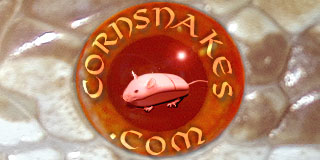Understanding Reptile Parasites. Klingenberg. Pg 92
Myth or Fact? Snake mites can affect any reptile of mammal.
Fact. This tiny pest is a mesostigmatid mite that primarily parasitizes snakes but can and will feed on other non-snake species, including humans. However, it is doubtful (but not impossible) that they can complete their life cycle on these alternate hosts...Snake mites must always be considered in any reptile species on which mites are seen.
Pg. 90
Mites
There are more than 250 different identified species of mites that can parasitize reptiles, the most common of which are the chigger mite (family Trombiculidae), the snake mite (Ophionyssus natricis), and the lizard mite (Hirstiella trombidiformis).
****************
I have no clue how you go about identifying a particular mite, though. But it sounds as if it would be possible for mites living on rodents to transfer to snakes, and vice versa.
